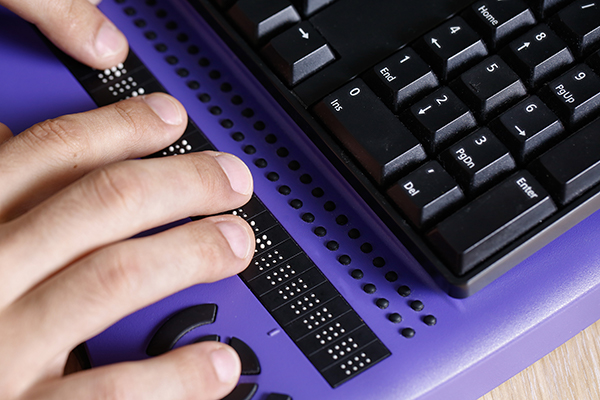
Have you ever talked to or seen someone with a disability and thought to yourself about how their lives would be better if there were a cure for their disability? What about feeling pity for someone living with a disability? These thoughts are ableist; while the intent might be good, the impact is harmful and perpetuates the notion that People with Disabilities deserve inequity and exclusion. Instead, we should actively promote the idea that individuals with disabilities are a diverse group that contribute unique, crucial perspectives to our society.
There are various ways to interact with and include the Disability Community. While there are several models of disability,1 advancing equity and inclusion particularly requires that we consider and utilize the Social and Human Rights Models of Disability:
- Social Model: This model “proposes that what makes someone disabled is not their medical condition, but the attitudes and structures of society. It is a civil rights approach to disability. If modern life was set up in a way that was accessible for people with disabilities then they would not be excluded or restricted.”2
- Human Rights Model: Based on basic human rights principles, "it recognizes that disability is a natural part of human diversity that must be respected and supported in all its forms. People with disability have the same rights as everyone else in society,” and disability “must not be used as an excuse to deny or restrict people's rights.”3
Using both models, we can begin to see people with disabilities correctly: as human. We may start to consider how we can become better allies for Individuals with Disabilities by ensuring that society is accessible. Perhaps you supervise someone with a disability and notice that their equipment is not meeting their needs; you should ask the person what barriers they are facing and work with them to accommodate their needs. The Social Model “does not deny the reality of [disability] nor its impact on the individual. However, it does challenge the physical, attitudinal, communication, and social environment to accommodate impairment as an expected incident of human diversity.”4
Each of us can look at the Human Rights Model as how we interact with and view people with disabilities. In the Human Rights model, we treat people with their basic human rights. This includes a “set of principles concerned with equality and fairness…living a life free from fear, harassment or discrimination.”5 Individuals with Disabilities are recognized and respected as a critical part of diversity. Everyone has many layers to who they are; a person is not wholly defined by their disability. We must ensure that our policies and practices support the Human Rights Model and encourage full inclusion and participation for Individuals with Disabilities.
Practicing the Social and Human Rights Models does not preclude the possible desire for a cure among people with disabilities. Those sorts of desires and decisions are personal and unique to each individual, and they should not dictate how we, or society, interact with this community. While NIH staff might often use the Medical Model of Disability to conduct research, the Social and Human Rights Models represent the ideal and should always be part of the conversation.6 Society should always work to envision and treat people with disabilities as humans—with dignity and respect.
Sources
- https://www.disabled-world.com
- https://www.learningdisabilities.org.uk
- http://www.daru.org.au
- https://pwd.org.au
- https://humanrights.gov.au
- https://www.ncbi.nlm.nih.gov
Do you have a story idea for us? Do you want to submit a guest blog? If it's about equity, diversity, or inclusion, please submit to edi.stories@nih.gov.
For news, updates, and videos, follow or subscribe to EDI on: Twitter, Instagram, Blog, YouTube.






